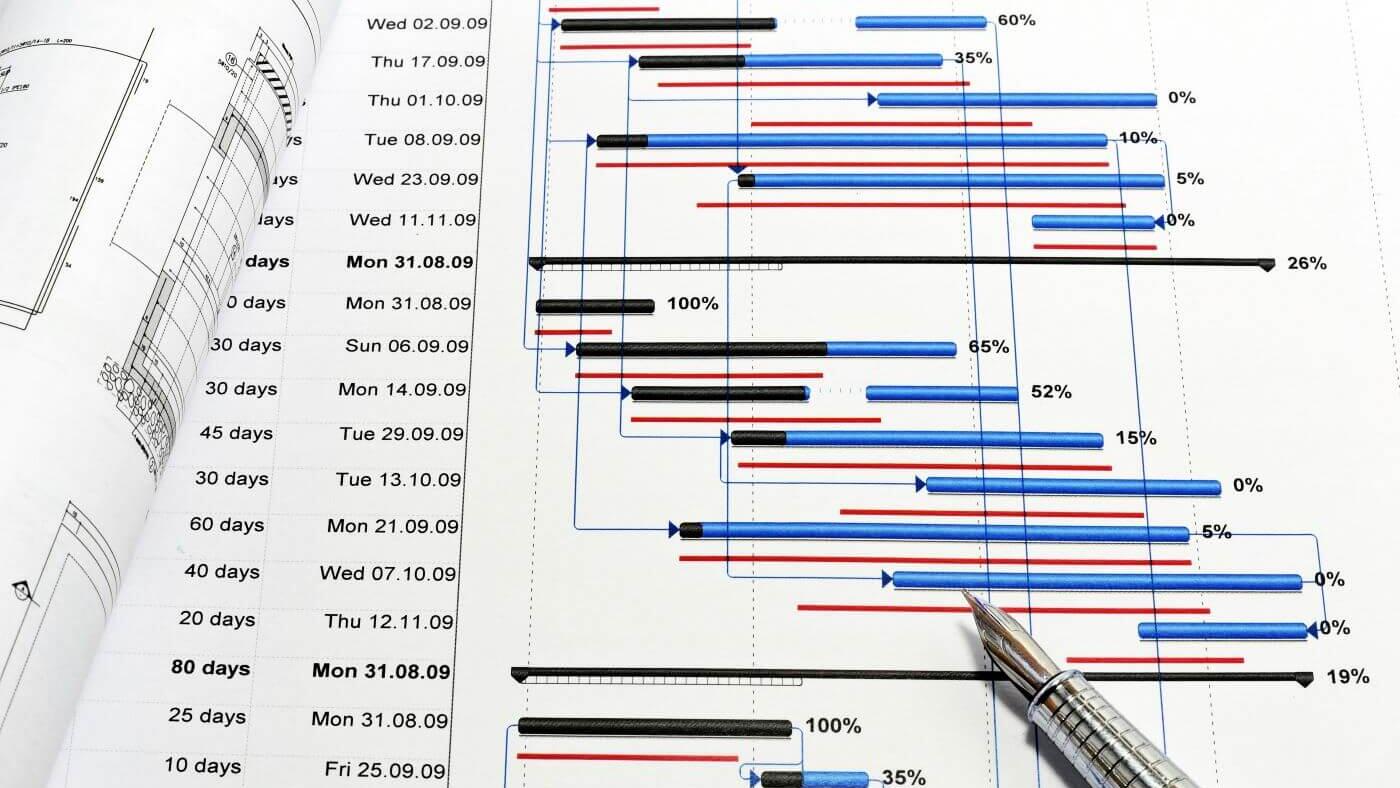“Are we on schedule?”
A critical challenge for any Owner (or Owner’s Representative) is determining whether a Contractor is on schedule so that they will complete the project by the completion date stipulated in the contract. While most, if not all construction contracts have completion dates, they generally don’t apply until the Contractor has, in fact, missed, or is about to miss, the deadline for completion. For many Owner’s, that is simply too late no matter what the contract entitles them for damages. For those Owners, they need to know in real time the status of the construction schedule so that they can either authorize the necessary acceleration measures to get back on schedule or pressure the Contractor to implement those measures when they are contractually responsible to do so.
Of course, to keep a project on schedule (or accelerate a project behind schedule), the Owner’s Representative must first know whether a project is truly behind schedule and why. This article will explore how we at Vertex, working as Owner’s Representatives on complex construction projects, analyze multiple monthly data points to determine the status of the Contractor’s progress against the schedule. Our analysis provides objective data which help Owner’s be confident their project’s progression aligns with their schedule.
The Four Pillars
Over the course of managing over $2.5 billion worth of projects in the past 15 years, we have found that it is simply not enough to analyze the Contractor’s monthly progress against their baseline schedule to determine whether they are on schedule in a given month. Although still an important analysis, the dynamic nature of construction scheduling is such that limiting the monthly analysis to that exercise can give a false impression about the status of the project as modifications to durations, float, predecessors, and critical path may obscure the true picture. That is why we developed a process called the “Four Pillars of Schedule Maintenance”. By analyzing these four data points, we can make an informed judgement on the status of the construction schedule which not only provides credibility in persuading the Contractor but also often underpins the most effective measures needed to get the project back on track.
Measuring Progress Against Contractor Baseline
As the underpinning of the other three pillars, a Contractor’s baseline schedule is still the focal point to monitoring construction progress. Given the current economic situation, now more than ever a solid baseline schedule is critical to managing a construction project. While the Contractor should be diligent in completing the baseline schedule, we believe that it is important that, in this instance, perfect should not be the enemy of good. Provided the fundamental approach and sequence to the project is finalized and the critical milestone dates can be determined, we accept the reality that the detail in the baseline may be revised later into the project as more information is uncovered through the buy-out process. Trade contractor input into the schedule is critically important in the effective management of a project, which is why we require a baseline schedule be submitted shortly after the procurement of key subcontractors.
Once we have received the baseline, we respond to the Contractor concerning the quality and general reasonableness of the schedule. While always respecting the Contractor’s responsibility for means and methods, we do not accept poor logic or obvious omissions of critical milestones that are necessary for an effective CPM schedule. Of fundamental importance, is the development of the critical or near critical path – those activities with zero or minimal float. – which is where we focus most of our attention.
Contractors should submit monthly updates against the baseline. Our analysis focuses on current status of the critical or near critical activities identified in the baseline. By analyzing how far those activities may have slipped from previous months or the baseline, we can target our most meaningful questions and concerns on those areas where proactive action can make the most impact.
Comparing Actual to Planned Cash Flows
While the Contractors cash flow is most often used to assist the Owner in timing its borrowing and disbursements, if done accurately, it is also provides an easy check on the status of the schedule. Projects that deviate significantly (say >5%) from their monthly draw for consecutive months are likely behind schedule. Of course, its reliability as a measure of progress is directly related to its correlation to the workplan for the project. To verify that, we request the Contractor to submit backup to its baseline cashflow by trade because, frankly, a cash flow that isn’t by trade, isn’t likely to be accurate. This allows us to quickly compare the cash flow with the major activities in the schedule and determine, in general, that it correlates.
An important role of the Owner’s Representative is to determine the reasonableness of a cash flow. While most projected cash flows for ground up construction follow a bell curve (often a very imperfect bell curve), each project has its own particularities that will impact whether a baseline cash flow is reasonable. For example, a project with multi-level below grade floors may have a significant early bump and then a lag while the superstructure gets underway. Also, the physical size and use of the project will impact a cash flow. A 100,000 square foot office building will look differently than a 60,000 square foot lab though they both may cost $60 million.
Once the planned cash flows are established, measurement on a monthly basis is a fairly easy exercise. The only time the baseline cashflow should be revisited is if the baseline schedule is revised ( a rarity, but not unheard of on complex projects.) If a significant discrepancy occurs, it should be analyzed for cause. Some reasons may not raise a concern (e.g.- a subcontractor’s underbilling); others should be investigated (e.g. – activity delayed due to late response to submittals or RFI’s.)
Monitoring Workforce Levels
Similar to cash flow, we also monitor the Contractors workforce levels. The benefit of this is that it doesn’t require waiting to month end; workforce levels are recorded daily. At the start of a project, we request the Contractor provide a workforce projection for a project corelated to the baseline schedule. All Contractors should be able to supply this information through its planning process with major trade contractors whether or not they input it into a resource-loaded CPM schedule.
As with cash flow, we as Owner’s Representatives should form a judgment on the reasonableness of a workforce projection. Of course, the two data points are related but not completely. Depending on the area labor costs, labor composes between 40-60% of the cost of construction but there are significant variances between trades. Payment for stored materials and equipment not yet incorporated into the building can skew workforce to cash flow ratio At Vertex, we keep historical records on different projects to develop reliable ratios for our Project Managers to use in assessing the reasonableness of planned workforce projections to projected cash flows.
As noted, daily workforce levels, by trade, should be collected as part of any daily report software. However, in general, we do not analyze workforce levels on a daily basis as the vagaries of the construction process would quickly overcome such analysis. We do, however, review the trends in the workforce levels to see if any patterns call for further investigation. Usually, this would be on a weekly basis, however it may be more or less depending on the criticality of the operations being measured. IE – those activities with little or no float, receive closer scrutiny.
Managing Procurement and Delivery of Critical Material and Equipment
Delays in the delivery of critical material and equipment are one of the most frequent causes of overall project delays in construction, so monitoring the procurement and delivery schedule is a primary responsibility of the Owner’s Representative. This has, of course, been magnified in recent years by the supply chain problems exposed so harshly by the pandemic. Integral to the development of a detailed baseline schedule is a thoughtful procurement schedule. We have found that this issue is so critical that we require Contractors to provide a separate Required on Job (ROJ) schedule that details the steps necessary to assure critical material and equipment arrives onsite when it needs to. This table of items lists the scheduled dates for procurement, submittal, approval, fabrication and delivery of these critical items. Like the baseline schedule, cash flow and workforce projections, it is our role as Project Managers to make sure that the schedule is well researched, comprehensive, and accurate.
The ROJ schedule should be a standing agenda item on every week’s Owner Architect Contractor meeting. Specifically, the top dozen or so critical items for that time period should be reviewed to assure they are being processed in a timely manner. As current day software advances has significantly improved productivity in this area, most of the effort should be around proactively resolving any missing or unclear information surrounding the item.
In this current economic period – perhaps the most volatile in a generation – a more intensive effort may be needed to assure that supplier commitments are honored once the item is released for fabrication. Simply relying on the word of a sales representative may not be sufficient to assure reliability of delivery dates, and now, factory or fabrication facility visits are necessary
Conclusion
Construction projects are dynamic and constantly changing endeavors. The most successful project management teams are nimble, creative and action-oriented. By using these four pillars, a pro-active owner can help a Contractor mitigate the effects of inevitable delays on the project before they impact the most critical deadline – occupancy.
Chris Kenney, Sr. Project Manager
Tim Bonfatti, President





